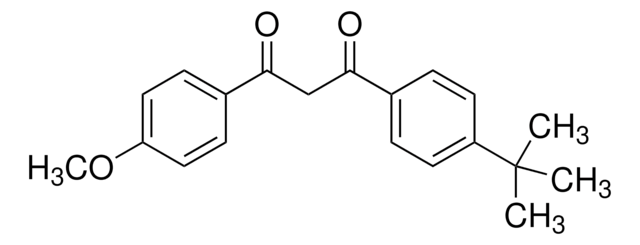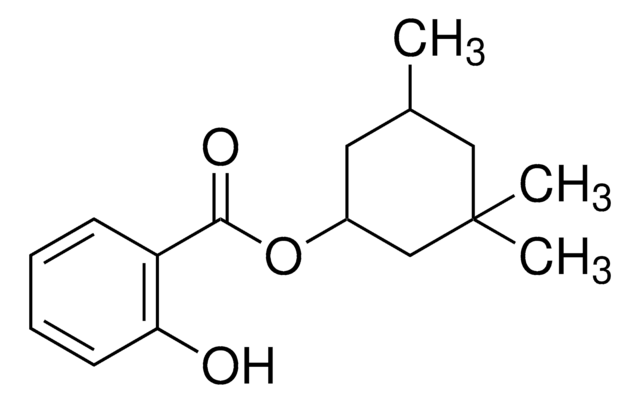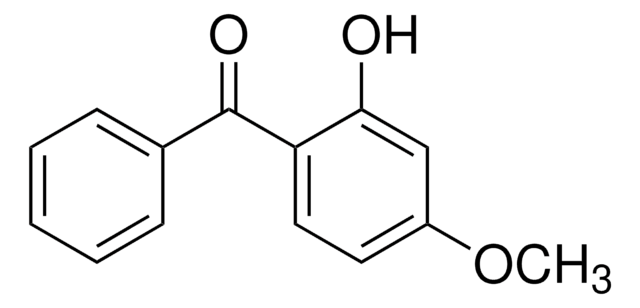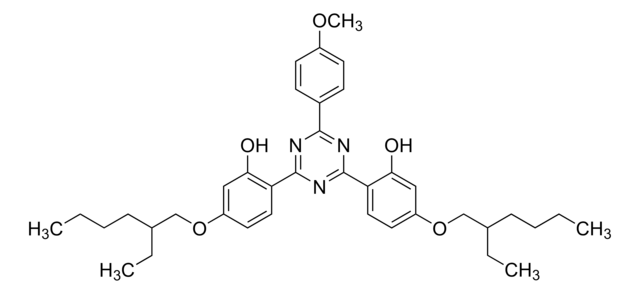02343
Octocrylene
analytical standard
Synonym(s):
2-Ethylhexyl 2-cyano-3,3-diphenylacrylate
About This Item
Recommended Products
grade
analytical standard
Quality Level
assay
≥98.0% (HPLC)
shelf life
limited shelf life, expiry date on the label
technique(s)
HPLC: suitable
gas chromatography (GC): suitable
refractive index
n20/D 1.567 (lit.)
n20/D 1.567±0.001
bp
218 °C/1.5 mmHg (lit.)
mp
−10 °C (lit.)
density
1.051 g/mL at 25 °C (lit.)
application(s)
cleaning products
cosmetics
environmental
food and beverages
personal care
format
neat
SMILES string
CCCCC(CC)COC(=O)\C(C#N)=C(/c1ccccc1)c2ccccc2
InChI
1S/C24H27NO2/c1-3-5-12-19(4-2)18-27-24(26)22(17-25)23(20-13-8-6-9-14-20)21-15-10-7-11-16-21/h6-11,13-16,19H,3-5,12,18H2,1-2H3
InChI key
FMJSMJQBSVNSBF-UHFFFAOYSA-N
Looking for similar products? Visit Product Comparison Guide
General description
Application
- Sunscreen formulations using reversed-phase high-performance liquid chromatography (RP-HPLC) technique.
- Marine mammals using ultra high-performance liquid chromatography (UHPLC).
- Solid lipid nanoparticle systems using high-performance liquid chromatography (HPLC) technique.
signalword
Warning
hcodes
pcodes
Hazard Classifications
Aquatic Acute 1 - Aquatic Chronic 1
Storage Class
10 - Combustible liquids
wgk_germany
WGK 2
flash_point_f
453.2 °F - closed cup
flash_point_c
234 °C - closed cup
Choose from one of the most recent versions:
Already Own This Product?
Find documentation for the products that you have recently purchased in the Document Library.
Customers Also Viewed
Our team of scientists has experience in all areas of research including Life Science, Material Science, Chemical Synthesis, Chromatography, Analytical and many others.
Contact Technical Service






![Hexyl 2-[4-(diethylamino)-2-hydroxybenzoyl]benzoate analytical standard](/deepweb/assets/sigmaaldrich/product/structures/171/239/18149257-0ac2-4ee5-8e7c-b0086ca9ee81/640/18149257-0ac2-4ee5-8e7c-b0086ca9ee81.png)

